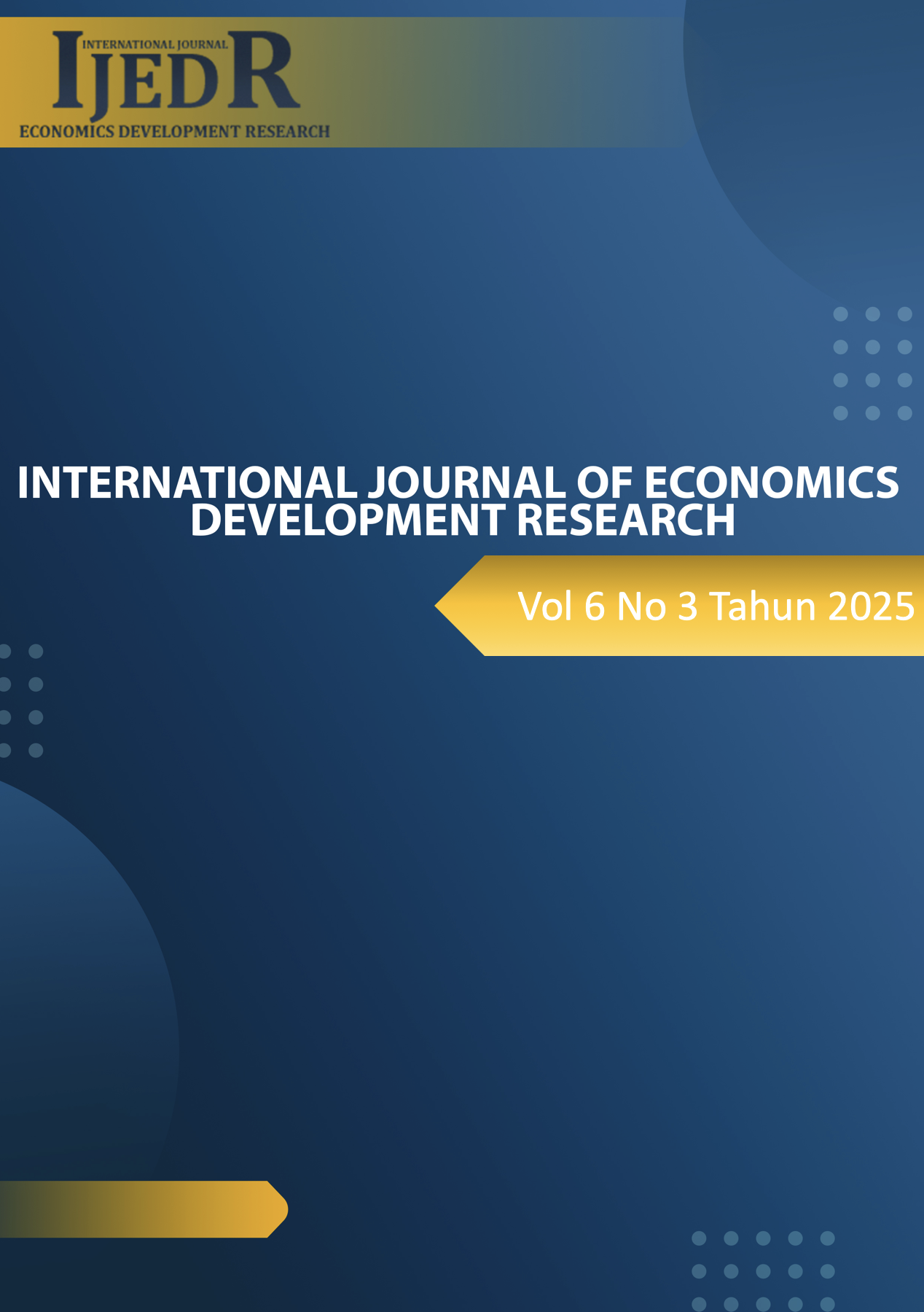Systematic Literature Review (SLR): Analysis of Financial Economic Reporting Fraud Detection Models Based on Hybrid Machine Learning and Psychological Factors
DOI:
https://doi.org/10.37385/ijedr.v6i3.7867Keywords:
Hybrid Machine Learning, Financial Report Fraud Detection, Systematic Literature Review, Psychological Factors, Pentagon FraudAbstract
Financial reporting fraud is a major challenge that threatens the integrity of financial markets. Hybrid Machine Learning (HML) offers great potential in detecting increasingly complex fraud, but its integration with psychological analysis is still limited. This study uses the Systematic Literature Review (SLR) approach with the PRISMA (Preferred Reporting Items for Systematic Reviews and Meta-Analyses) method to identify trends, challenges, and opportunities in the application of HML for detecting financial reporting fraud. Data were collected from various leading academic databases, such as ScienceDirect, Web of Science, IEEE Xplore, SINTA, SCOPUS, and ProQuest, with relevant keywords. The selection process was carried out through the stages of identification, screening, eligibility evaluation, and inclusion, resulting in 27 main articles published between 2017-2025 from various countries. This study found that financial reporting fraud detection has developed significantly with the integration of HML and psychological factor analysis. Most studies focus on quantitative approaches based on Machine Learning (ML), Deep Learning (DL), and Big Data Analytics , with the main variables being financial ratios, corporate governance, and psychological factors. However, a multidisciplinary approach that combines AI techniques, forensic auditing, and psychological insights is still needed. These findings contribute to identifying research gaps and directions for the development of more comprehensive fraud detection models.
References
Agustina, I., & Wandansari , M. (2023). How effective is Artificial Intelligence in fraud detection during the COVID-19 period: Systematic Literature Review. International Journal of Digital and Knowledge Management , 12 (1), 23-45.
Ali, A., Abd Razak, S., Othman, SH, Eisa, TAE, Al- Dhaqm , A., Nasser, M., ... & Saif, A. (2022). Financial fraud detection based on machine learning: a systematic literature review. Applied Sciences , 12 (19), 9637.
Ashtiani, M.N., & Raahemi , B. (2021). Intelligent fraud detection in financial statements using machine learning and data mining: a systematic literature review. IEEE Access , 10 , 72504-72525.
Bakumenko , A., & Elragal , A. (2022). Detecting anomalies in financial data using machine learning algorithms. Systems , 10 (5), 130.
Bao, Y., Ke, B., Li, B., Yu, Y. J., & Zhang, J. (2020). Detecting accounting fraud in publicly traded US firms using a machine learning approach. Journal of Accounting Research , 58 (1), 199-235.
Chen, X., & Zhang, S. (2018). Machine learning techniques for detecting financial fraud. Financial Technology Review , 22 (4), 200-217.
Craja , M., et al. (2020). Deep learning for detecting financial statement fraud. Journal of Financial Fraud Analysis , 25 (4), 332-349.
Dewi, DR, & Saputra, M. (2021). The Role of SINTA in Improving Indonesian Research Quality: A Comprehensive Review. International Journal of Research and Reviews , 8 (5), 1-7.
Hilal, W., Gadsden, S. A., & Yawney , J. (2022). Financial fraud: a review of anomaly detection techniques and recent advances. Expert systems With applications , 193 , 116429.
Goecks, L.S., et al. (2021). Anti-money laundering and financial fraud detection: A systematic literature review. Intelligence Systems in Accounting , Finance , and Management , 29 , 71-85.
Jan, C.L. (2021). Detection of financial statement fraud using deep learning for sustainable development of capital markets under information asymmetry. Sustainability , 13 (17), 9879.
Liu, H., et al. (2022). Comparison of regression and machine learning models in detecting financial statement fraud. Journal of Business Analytics , 15 (2), 123-134.
Lokanan , M., & Sharma, A. (2024). The use of machine learning algorithms to predict financial statement fraud. Journal of Financial Crime , 28 (1), 115-128.
Nindito , P., et al. (2024). Agency Influence : Transactions party related , governance companies , and fraud report finance . Journal Management and Accounting , 33 (3), 245-259.
PwC. (2022). Global Economic Crime and Fraud Survey 2022. PwC.
Reddy, S.R.B., Kanagala, P., Ravichandran, P., Pulimamidi, R., Sivarambabu, P.V., & Polireddi, N.S.A. (2024). Effective fraud detection in e-commerce: Leveraging machine learning and big data analytics. Measurement: Sensors , 33 , 101138.
Ridho , A., et al. (2024). The Role of Artificial Intelligence in Fraud Detection: A Systematic Literature Review. Artificial Intelligence in Finance , 18 (2), 301-315.
Riskiyadi , R., et al. (2023). Detecting future financial statement fraud using a machine learning model in Indonesia. Indonesian Journal of Business and Finance , 19 (2), 140-155.
Shahana, T., Lavanya, V., & Bhat, A. R. (2023). State of the art in financial statement fraud detection: A systematic review. Technological Forecasting & Social Change , 192 , 122527.
Sánchez-Aguayo, M., Urquiza-Aguiar, L., & Estrada-Jiménez, J. (2021). Fraud detection using the fraud triangle theory and data mining techniques: a literature review. Computers , 10 (10), 121.
Sharma, P., & Singh, R. (2022). Integrating AI and Data Analytics for Financial Fraud Detection. Journal of Financial Analysis , 9 (3), 188-201.
Sun, J., et al. (2024). An intelligent detecting model for financial frauds in Chinese A-share market. Financial Fraud Analysis Journal , 12 (3), 210-224.
Syahputra , A., & Afnan, M. (2020). Fraud Detection : The Role of Big Data and Forensic Audit . Journal of Forensic Audit and Analysis , 18 (4), 299-310.
Wang, H., Wang, W., Liu, Y., & Alidaee , B. (2022). Integrating machine learning algorithms with quantum annealing solvers for online fraud detection. IEEE Access , 10 , 75908-75917.
Wahyuni, S., & Budiwitjaksono , R. (2017). Fraud Triangle as a Detector of Financial Statement Fraud. Journal Management Finance , 29 (3), 156-168.
West, A., & Bhattacharya, P. (2016). Applications of Machine Learning in Financial Fraud Detection: A Survey. Journal of Financial Technology , 10 (3), 345-367.
Wyrobek, J. (2020). Application of machine learning models and artificial intelligence to analyze annual financial statements to identify companies with unfair corporate culture. Procedia Computer Science , 176 , 3037-3046.
Zhang, F., et al. (2025). Predicting financial fraud in Chinese listed companies: An enterprise portrait and machine learning approach. Journal of Financial Fraud Detection , 14 (1), 92-106.





